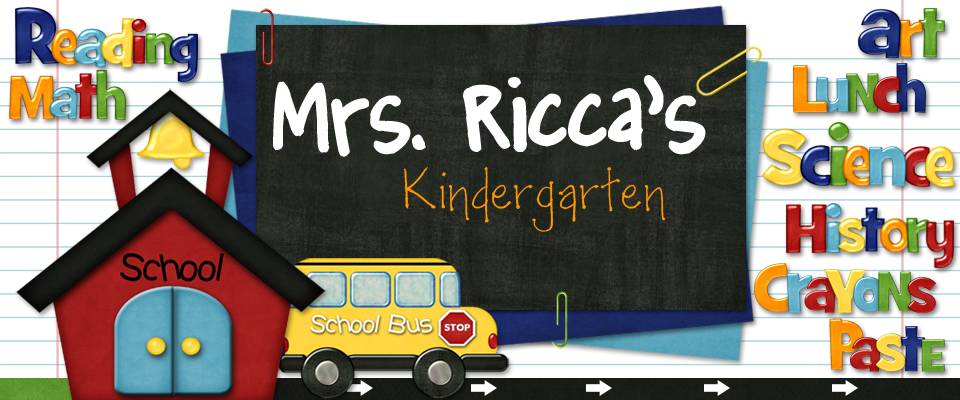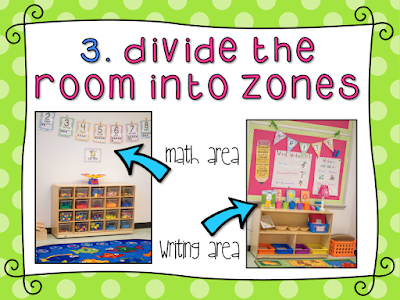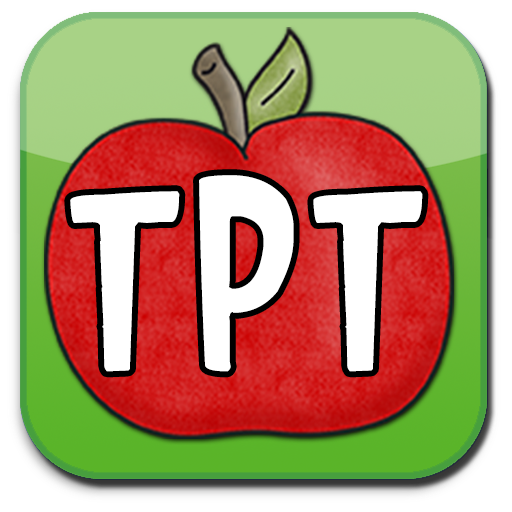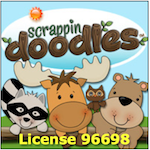It's
that time of year again! The school year is quickly approaching (or has already
begun for many of you)! Setting up a classroom is a lot of work, but I really
do enjoy watching it all come together. Everything is clean and new and neat. I
love to look around my finished room and appreciate all the work that went
into it. It's ready for a new class of kiddies to enjoy for another year!
Here are five of my best tips for setting up a classroom that it is inviting, organized, and child-friendly.
Here are five of my best tips for setting up a classroom that it is inviting, organized, and child-friendly.
1. Map it out!
I always sketch up a map of my entire room so that I can figure out the placement of everything before I even enter my room for the first time. You can also use the Lakeshore Classroom Designer, which lets you enter the dimensions of your room and add Lakeshore items, furniture, etc. First think about where you will place your meeting area and student tables, since these will take up the most area. Also think about where you will put your teacher table(s). Be sure to place it in a spot where you have a good view of all areas of the room. Then build around this. Above is a map of my room that I made last summer.
2. Set up your student tables.
- This will take up the most space, so even if you don't know where you want to put anything else, start by moving the tables into place. You will at least feel like you got a lot done!
- Think about how you want to group your students. Personally, I always set my students up in clusters to foster collaboration, but you may have a different configuration that works for you.
- Use velcro
for your name plates! To make seating changes simple, I always use velcro
on the name tags. This way they can be swapped out in an instant. Plus, it
looks so much neater and you don't have to worry about tape peeling!
- You may want
to come up with table numbers or table names to make it easy to call
tables to the rug, give out table points, etc. I hang a paper lantern
above each table with the table names.
- Create a
system or place where you will house all the supplies for each table. We
share all supplies in our classroom, so I place a caddy in the middle of
each table. The colors of the table caddies coordinate with the names of
the tables. For example, the blue dolphins, pink flamingos, etc. Some
teachers keep the caddies on a shelf separate from the table, and student
helpers bring them to the tables when needed.
3.
Divide the room up into learning zones.
- Each area of
my room is dedicate to a particular subject area. For example, there is
the reading area, where I have my small group table, classroom library,
reading bulletin board, charts, literacy centers, and other reading
materials. The math area contains my math bulletin board, charts,
manipulatives, and math center tubs. You get the idea.
- Keep the
noisy areas away from quiet centers like the library.
- Use furniture
and shelf units to divide up the areas. I have a HUGE room, and I've found
that using the furniture works to section off and define the different
areas of the room.
- Label
everything! Be sure to label each area and supplies clearly so students
can navigate the classroom independently.
4.
Create an inviting, organized, and accessible library.
- Books
should be well organized and labeled clearly. This way, students will be
able to use the library independently.
- Choose
a system for how you will organize your books. You can do it by theme or
by level. I do both. I organize half of my books by reading level and the
other half by topics/themes.
- Label both your book bins and the books. I label each book
with a small sticker that corresponds to the book bin where it belongs.
Because of this, my students have never had a problem putting the books
back in the right spot!
- Buy some sturdy book bins. You don't need to spend a lot on
book bins! I bought clear Sterilite shoe bins at Target for about $1 each.
They have lasted three years so far and are still in perfect
condition. Dollar Tree also has lots of great baskets and bins.
- Create a book display where you can display books with
covers facing out. I have a wooden book display where I rotate seasonal
books and books related to our current units of study. I also bought some
little book easels at Michaels for this purpose.
- Make it comfy and inviting! Add some cute decorations,
lamps, beanbag chairs, and pillows!
5.
Set up your bulletin boards.
- Start out with very little on the walls. The bulletin boards do not need to be covered in posters and charts on the first day! Less is more. I start out with some bright clean backgrounds, a nice border, and a subject heading at the top. That's pretty much it! We will fill those walls with student work and charts that we create together during the first weeks of school.
- Keep it
simple! I have a separate bulletin board for each subject area. I place the subject
heading at the top of each board. Then I simply switch out the charts or
student work during each unit. Old stuff comes down and only charts that
are relevant to our current units are displayed. Too much can be
overwhelming for kids, and it looks cluttered.
- If
you're short on space, get creative! People ask how I got so many bulletin
boards in my room. I don't really have that many. Here's my secret...a few
of them are actually white boards. I use my easel for teaching, so the
white boards go unused. I cover them with paper and use magnets to hang
student work. This also makes it quick and easy to change out the work!
I have also used clotheslines, backs of book shelves, pocket charts, and
the sides of filing cabinets to expand my wall space!
- Make them
interactive! The great thing about using a chalk/white board or filing cabinet
is that your bulletin boards become magnetic. This way students can
actually USE them! They are not just for show, they are for learning. For
example, students come up to the word wall in my room and take words back
to their seats to use as they write.
- Fabric
and wrapping paper make great bulletin board backdrops!
Once
you're done, take a walk through the room and think about how everything flows.
Is there enough space to move around? Can you pull out the chairs without
bumping into anything? Are the resources and charts accessible to students and
visible at students' eye level? Does it look organized and neat, or is it
cluttered? Are the areas of the room clearly defined? Most of all, does it look
and feel like a place you want to spend your days for the next ten months?
Below you can find all the products found around my room, including my chevron decor bundle, banners, name plates, labels, posters, and more!
Below you can find all the products found around my room, including my chevron decor bundle, banners, name plates, labels, posters, and more!
*I am currently updating this product. It will be back up in my store shortly!



























